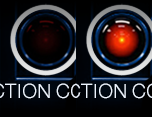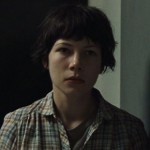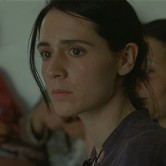Movie Review: BURN AFTER READING (2008)
![]()
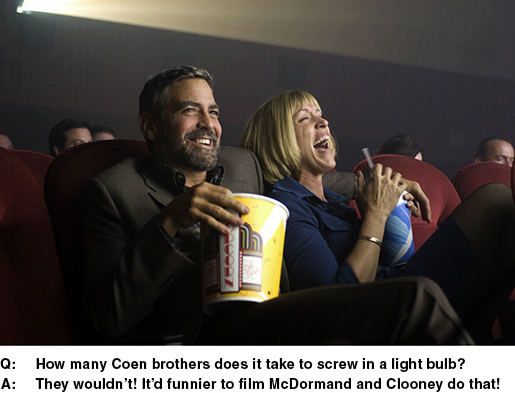
A few months shy of a year, right after winning Academy Awards for best written, produced and directed film of 2007, Joel and Ethan Coen breathlessly churn out something completely different. Such confident, heady, speedy workmanship that is Burn After Reading makes me wonder if the Coens realize No Country For Old Men – a film full of Chigurh – actually won the Best Picture. For a comedy about government intelligence, it is curiously, though appropriately ominous. This coming from the Coen Brothers, I am not surprised. I am overjoyed.
Burn After Reading is not as broad and eccentric as Raising Arizona (1987) and O Brother, Where Art Thou (2000). Don’t get me wrong, it’s still eccentric. The comedy is more subdued like Barton Fink (1991) where the stuck up title character (John Tuturro) proclaims himself a writer of the common man (“The life of the mind. There’s no road map for that territory”.) while ignoring a bumbling insurance salesman (John Goodman) who often says “I could tell you some stories”.
Osborne Cox (John Malkovich from Being John Malkovich), an intelligent analyst for the CIA, is demoted due to his alcoholism. He doesn’t believe that’s the case because he personally examines how much liquor is in his first glass and then pours just a little bit back into the bottle. Such a conscientious act would never be perform by an alcoholic. Osborne quits to the immediate displeasure of his forever exasperated working-wife Katie (Tilda Swinston, who is having a ball here). Fed up with pointless bureaucracy, Osborne decides to write a book detailing his work history and Katie plots to divorce and bleed him dry.
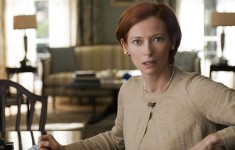 Harry Pfarrer (George Clooney) is cheating on his wife Sally (Elizabeth Marvel) with Katie. Both women separately confide to Harry that the other is a “cold-hearted bitch”. He must be attracted to that type. Considering this, it’s funny which target audience both women’s careers aim towards. Being a notorious sexaholic, Harry is flexible toward the other women he meets online and eventually beds. He makes good company. What an adorable adulterer; he schemes rather lightheartedly and is genuinely surprised (and hurt) when those he trusts turn on him.
Harry Pfarrer (George Clooney) is cheating on his wife Sally (Elizabeth Marvel) with Katie. Both women separately confide to Harry that the other is a “cold-hearted bitch”. He must be attracted to that type. Considering this, it’s funny which target audience both women’s careers aim towards. Being a notorious sexaholic, Harry is flexible toward the other women he meets online and eventually beds. He makes good company. What an adorable adulterer; he schemes rather lightheartedly and is genuinely surprised (and hurt) when those he trusts turn on him.
Over at the fitness club Hardbodies, we meet its motivational trainers Linda Litzke (Frances McDormand, Mrs. Joel Coen) and Chad Feldheimer (Brad Pitt). Chad is an aging hipster who tries to stay young by streaking his hair, keeping exercise priority number one, and occasionally breaking into dance when excited. Linda is sweet, lonely and pushing forty. She has resorted to finding a mate online. Desiring a man with a great sense of humor (who doesn’t?), she screens her dates with the same romantic comedy playing in theaters. She has (wrongly) convinced herself no man wants her because of her body and seeks modifications under the knife. Her plastic surgeon, mercilessly dotting her flesh with a felt pen, sells her on tummy tucks, breast augmentation, face lifts like a car salesman ticking off new features at a price inflation.
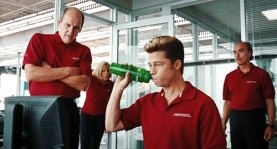 They both come across a burnt disc (“Mac or PC?”) holding Osborne’s secret files. This property could pad their accounts. Their scam is in the same spirit as the one in Waking Ned Devine (1998). To them it’s rather harmless. Chad is the kind of dope who thinks “Reward!” for going out of his way to return sacred government files instead of blackmail. Even after the issue of blackmail is made very clear, he still thinks “Reward!” because his own goodwill counterattacks any notion of perceiving himself as an exploiter. Whenever he’s found out of something wicked, he immediately smiles cheerfully, convinced that whatever trouble he’s in can be laughed off. Heck, he’d just as soon treat you to a large health shake and an afternoon of laughs to make sure bygones are bygones.
They both come across a burnt disc (“Mac or PC?”) holding Osborne’s secret files. This property could pad their accounts. Their scam is in the same spirit as the one in Waking Ned Devine (1998). To them it’s rather harmless. Chad is the kind of dope who thinks “Reward!” for going out of his way to return sacred government files instead of blackmail. Even after the issue of blackmail is made very clear, he still thinks “Reward!” because his own goodwill counterattacks any notion of perceiving himself as an exploiter. Whenever he’s found out of something wicked, he immediately smiles cheerfully, convinced that whatever trouble he’s in can be laughed off. Heck, he’d just as soon treat you to a large health shake and an afternoon of laughs to make sure bygones are bygones.
The richly experienced character actor Richard Jenkins is such a good sport after his rewarding lead work in this year’s The Visitor. Here he plays Ted, a middle-aged manager of the gym who secretly pines for Linda’s heart. He’s a sweet, uncomplicated man who has the disadvantage of loving her for exactly who she is. She is not attracted to that kind of guy (translation: loser). He knows this but that still doesn’t stop him from doing just about anything to make her happy. It helps the pain of unrealized expectations and actions to be good to someone whose opinion actually matters. However, Ted has his own way of being stupid. On her way out of the office, Ted cries out, “You’re changing, Linda. It’s very sad.” Please! How did she change? From his own ideal perception of her? Yes, the change is finding out who she really is as opposed to who he wants her to be. What’s really sad is the fact that he doesn’t realize this .
Most of the humor is in observing the way people speak. How people deep in conversation are oblivious to their art (“Appearances can be very… deceptive”.) versus the way smart people still sound dumb. Note how Osborne pronounces “memoirs”. He enunciates it so excruciatingly and dryly as if to say: “See! I am one of those rare exceptions on this planet who are naturally well-versed!” He’s like a stuck-up nincompoop who says “absolutely”, the four-syllable equivalent of “yes”, instead of just saying “yes”.
There are small and wonderful pleasures to be had in the crevasses and corners of this film. When Linda looks through the wallet of a one-night stand, she uncovers gift cards from 7-Eleven and Safeway (‘Ingredients for Life!’). The engagement between a father and son’s heart-to-heart on a drifting boat. How Chad approaches Osborne’s car for an important rendezvous and remembers to take off the headphones to his iPod before entering. The way a chirpy television morning host interrupts her guest, an author reading her children’s book, to show viewers at home “the illustration” – the book’s cover credits the writer with no mention of the illustrator.
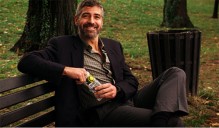 The biggest gut-buster is the revelation of Harry’s secret project he’s building in his basement. The build-up carries a dark and mysterious tone. The payoff is in the vein as the Stonehenge prop in Rob Reiner’s This Is Spinal Tap – on a scale from one to ten, it’s an eleven. It had me howling well into the next scene. Once you get past how wrong and creepy it is, it is actually rather sweet. The purpose of the device is well-intentioned, especially given the means of Harry. Many men would be appalled and insulted if their partner were to use such a device. Harry is an exception. What a lucky woman to have such an endearing knucklehead for a husband.
The biggest gut-buster is the revelation of Harry’s secret project he’s building in his basement. The build-up carries a dark and mysterious tone. The payoff is in the vein as the Stonehenge prop in Rob Reiner’s This Is Spinal Tap – on a scale from one to ten, it’s an eleven. It had me howling well into the next scene. Once you get past how wrong and creepy it is, it is actually rather sweet. The purpose of the device is well-intentioned, especially given the means of Harry. Many men would be appalled and insulted if their partner were to use such a device. Harry is an exception. What a lucky woman to have such an endearing knucklehead for a husband.
The versatile Carter Burwell, as dedicated a musical collaborator to the Coens as Howard Shore to David Cronenberg, has scored Burn After Reading with an urgent, thumping, and somewhat melancholy soundtrack. It is a hybrid of his scores from the predatory chords of the underrated James Foley thriller Fear (1996) and the apocalyptic jungle-like tones of Spike Jonze’s Adaptation (2003). Earlier this year, Burwell committed work to magical Martin McDonagh’s In Bruges, a darkly comical and dramatic masterpiece that was my favorite film of 2008 for six months until The Dark Knight bumped it to second place (Between you and me, whenever I watch my In Bruges DVD, sometimes I’m tempted to put it back on top).
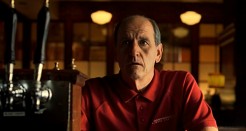 The Coens and their cinematographer Emmanuel Lubezki (Children Of Men, 2006) apply a very straight-forward, yet engaging visual approach to contrast with the labyrinthine, oddball events on screen. There’s even an intimating yet quirky sensibility in the framing as if the space around the characters make them more insignificant. Burn After Reading doesn’t look like a general comedy that’s over-lit as a ploy to make the audience happier and receptive to hysteria. It stays true to the look of its adult thriller, while letting the madcap characters themselves lighten their dark surroundings.
The Coens and their cinematographer Emmanuel Lubezki (Children Of Men, 2006) apply a very straight-forward, yet engaging visual approach to contrast with the labyrinthine, oddball events on screen. There’s even an intimating yet quirky sensibility in the framing as if the space around the characters make them more insignificant. Burn After Reading doesn’t look like a general comedy that’s over-lit as a ploy to make the audience happier and receptive to hysteria. It stays true to the look of its adult thriller, while letting the madcap characters themselves lighten their dark surroundings.
One striking image depicts Harry stranded and paranoid on a suburban road where he is back-lit by a yellow sunset and dark leafy trees create a shadowy frame around him. There are a few sensationalistic shots. A couple of Dutch angles are used when looking up a staircase from Harry’s basement where Sandy inquires what’s behind gated curtain and another looking downstairs at a very shaken Harry in a different house. A moving shot at floor level following an agent’s footsteps across the stark CIA hallway is a reverse homage to running dress shoes in The Hudsucker Proxy (1994), the one that starts the infamous Hula Hoop Montage – a worthy candidate for a Scene To Be Seen article. Much like déjà vu, one violent confrontation near the film’s end is a visual quotation including composition, action, and execution from the masterpiece Fargo (1996).
The Hula Hoop Montage From “The Hudsucker Proxy”
The Coens transcend their targeted genres; improving upon the espionage thriller, the social satire, and the romantic comedy. Like Paul Thomas Anderson’s Punch Drunk Love (2002), Burn After Reading applies tension and danger in its romantic comedy, a genre generally treated as passively light where tension is needed to be more effective. Both films examine the lonely heart yearning for a compassionate partner in a way that is painfully real and delightfully zany. ‘Here We Go’. The Coens could have easily made a devastating drama about the dead ends of Internet Dating, the temptations and consequences of adultery, and the dire cover-ups made by a calmly, sanctimonious government agency. The screwball elements just make these compelling issues easier to digest.
 Somehow, while reminiscing about Burn After Reading, it is at once so thoughtful and yet it seems like such a lark. This film is so smart that it doesn’t resort to having a dimwit like Chad pick up on the crude connotation of Osborne’s surname. However, they are not above naming the intelligence expert Cox. There is a difference between celebrating crudeness — it is human nature, after all — and wallowing in it. The Coens, like all good comedians, don’t coach you to laugh at their jokes. They remain stone-faced and quietly relish the joy when people laugh of their own accord. You can’t hold hands with wit.
Somehow, while reminiscing about Burn After Reading, it is at once so thoughtful and yet it seems like such a lark. This film is so smart that it doesn’t resort to having a dimwit like Chad pick up on the crude connotation of Osborne’s surname. However, they are not above naming the intelligence expert Cox. There is a difference between celebrating crudeness — it is human nature, after all — and wallowing in it. The Coens, like all good comedians, don’t coach you to laugh at their jokes. They remain stone-faced and quietly relish the joy when people laugh of their own accord. You can’t hold hands with wit.
People deserve the movies they choose. So many movies are made to cater to those with lowered expectations. A laugh track is welcomed by those who tense up at being challenged after paying the price of admission. So many movies are merely okay. They are rolled and doled like dough; geared toward the lowest common denominator with lame story lines that logically feature very stupid characters. Burn After Reading is about stupid characters. This is what happens when the filmmakers are as bright as a professionally-manned film projection bulb. We really deserve Burn After Reading.
BURN AFTER READING (2008) Trailer
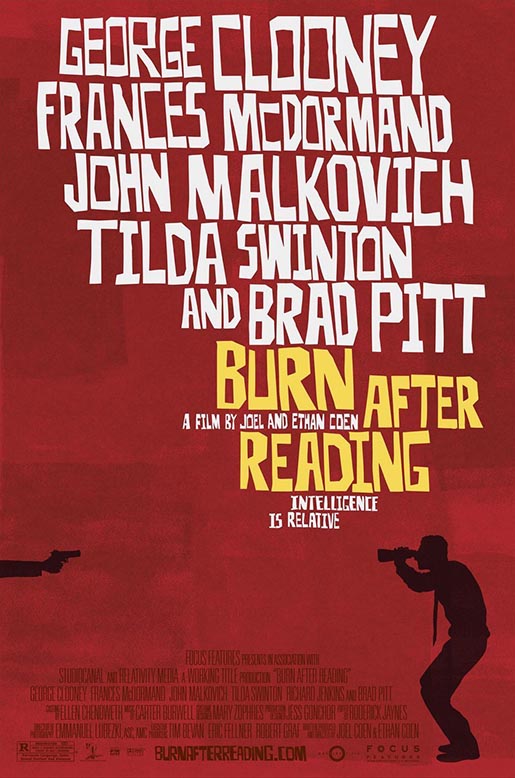
© 2008 – 2024, CINELATION | Movie Reviews by Chris Beaubien. All rights reserved.


